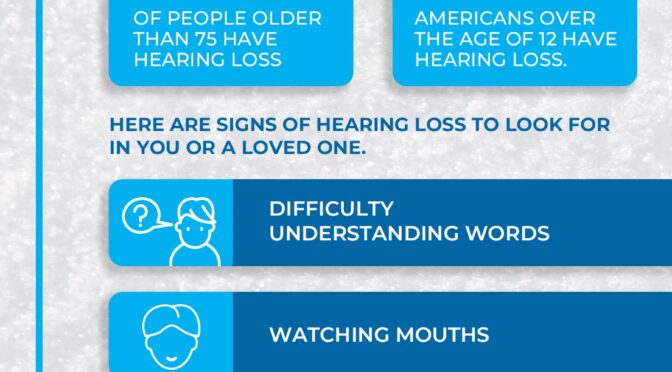More than half of the people over the age of 75 struggle with hearing loss. That being said, senior citizens aren’t the only ones that struggle with hearing loss. One in five Americans that are over the age of 12 will also struggle with hearing loss. And, according to the Hearing Health Foundation, more than 90% of children who are born with hearing loss will be born to parents with typical hearing.
While hearing loss is extremely common, it isn’t something that people are forced to live with. Over the years, there have been various solutions designed to help with hearing loss, one of the most common being hearing aids.
Platinum Hearing Aids provides high-quality hearing aids to people of all ages within the Detroit area. In today’s blog post, we are going to go over a few of the signs that you want to keep an eye out for that are associated with hearing loss. If you do notice any of these signs in a loved one, make sure to schedule a hearing test with the team at Platinum Hearing Aids, and we would be more than happy to provide you with some further insight.
Difficulty Understanding Words
One of the first signs that people notice in their loved ones is an overall difficulty understanding and hearing words during a conversation. In many instances, this will first be noticed when conversations are taking place in a setting with quite a bit of background noise, but it will become all the more noticeable when there it has become difficult to understand others in even the quietest of settings.
Watching Mouths
When individuals have a difficult time hearing what someone is saying, they often turn to watching the speaker’s lips rather than fight to listen. Lip reading is incredibly difficult at first, making the loss of hearing all the more frustrating. Even so, most people will resort to lip reading when they can’t hear, so if you notice that they’re more focused on your mouth while you’re talking, chances are it’s because they can’t hear you very well.
Loud Volume
Aside from struggling to hear during conversations, many individuals who are struggling with hearing loss will also turn the volume up on the devices that they’re using. From the TV to the radio, it’s extremely common for individuals struggling with hearing loss to hear at the standard volume level. So, what do they do? They turn it up! At times, individuals with hearing loss will watch TV so loud that other members of the household wind up with a headache. If that’s the case for your household, it’s definitely time to consider hearing aids for your loved one.
Muffled Speech
Changes in hearing are the first things that people think to look for, but that’s not the only thing that will change when there’s a decline in hearing. Another common area affected by a loss of hearing is speech. For many, speech becomes muffled when hearing starts to go, often because there’s a lack of confidence in what they’re saying because they can’t hear it back.
Frustration in Social Situations
After reading all of the different early signs of hearing loss, you probably have a clear idea of why frustration would be something that most individuals would feel after a social event. Between struggling to follow a conversation, separating background noise from the words that someone is saying, and trying to read the lips of the speaker, it’s not surprising that someone hard of hearing is going to be exhausted. After a while, this frustration becomes more and more common, at which point it’s ideal timing to schedule a hearing test for a pair of hearing aids.
Trust the Team at Platinum Hearing Aids
A decline in hearing abilities looks different for everyone. While seniors are the most common age range that struggles with hearing ability, they’re certainly not the only ones that need to be aware of these signs. If you notice any of these signs with your child, your partner, your parents, or a friend that you care deeply about, consider bringing up that they are showing signs of a decline in hearing. More often than not, this will open up a conversation about the struggles that they’ve been having with their hearing.
In the case that a conversation does start about your loved ones hearing or you think a loved one could benefit from some hearing aids to help counter hearing loss, look no further than the team at Platinum Hearing Aids in Detroit. For years we have worked to provide people in the area with high-quality guidance and hearing aids so that they can enjoy the highest quality of life. Whether you’re interested in learning more about hearing aids or you’d like to get a hearing test scheduled, contact our office, and a member of our team will get you taken care of.







